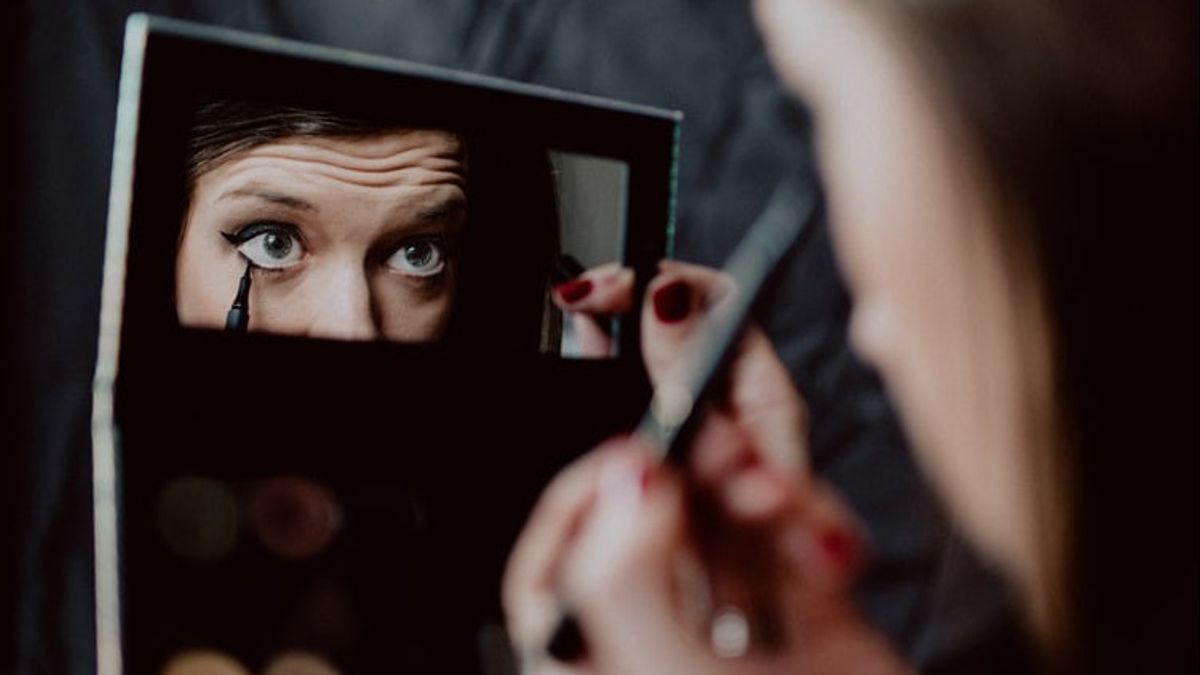JAKARTA - Eyeliner is one small item that is part of women's life. Not all women, really. However, for women who are obliged to wear make-up for some reason, something is definitely missing if they don't wear this eye makeup.
This is because the eyes are a part of the face that is very susceptible to changes in make-up. Even the smallest change or color or shape of the eye can dramatically enhance appearance and increase self-confidence. However, did you know that the cultural roots of beautifying the eyes began long before the time of Ancient Egypt?
In 1912, Egyptian historian from Germany named Ludwig Borchardt found a statue of the Queen of Ancient Egypt Nefertiti in Amarna, Egypt. Nefertiti's appearance, which has a long neck, high cheekbones, and perfectly symmetrical features makes the whole world captivated. Nefertiti's beauty is undeniable.
The general appeal of Ancient Egyptian sculpture led to a trend that pushed eyeliner into the 20th century, where people imitated a thick black outline that outlined almond-shaped eyes, such as those of Nefertiti's. The black lines that make up Nefertiti's beautiful eyes are from strokes called kohl, or what is now trending is called eyeliner.

Kohl appears to have existed in 3100 BC, long before Nefertiti's reign. According to Vice, historians have also found evidence of the use of kohl and other eyeliner-like substances in ancient societies among the Romans, the Canaanites in the Levant, the Ancient Greeks, and many more.
In addition, in ancient Egypt, the use of kohl was also not limited to women. The men also use it. This is due to cultural reasons for honoring gods. For the people of ancient Egypt, to face the gods you must be able to appear as beautiful or handsome as possible.
In addition, the use of kohl is also to reduce the effects of sunlight which often makes the eyes water a little because it hurts. In fact, kohl at that time was also to maintain cleanliness because kohl at that time was known to contain antibacterial.
Both poor and rich Egyptians wore kohl. The composition and luster that emanates from the kohl can distinguish the social status of the community. Although the ancient Egyptian empire collapsed, the kohl has not lost its interest, even today.
Today, in parts of India, Pakistan, Africa and the Middle East, kohl with a formula similar to that used in ancient Egypt is still used to decorate the eyes. Another popular name is celak.
Towards the modern eraThe moment that started the modern version of eyeliner came in 1920. At that time many women had left the fashion of the Victorian era. In the Victorian Era, people who wore too much makeup were often considered sex workers. However, after this culture faded, women began to embrace a new fashion that was fueled by ballet dancers, stage actors, musicians and photography.
Cosmetics companies see new discoveries appearing every month with a growing population of women ready and willing to try anything to look like an actress. The time when eyeliner became popular was in 1922, after British archaeologists Howard Carter and George Herbert discovered ancient Egyptian items.
Tutankhamun's tomb was found with all of his wealth and art intact. World coverage of the invention also introduced Ancient Egyptian eyeliner to the west, which was immediately accepted in the cosmetic world.
The 1970s gave birth to several types of new fashions. Eyeliner is used in new ways. Punk and goth fashions relying on the dramatic eye effect are much loved. And eyeliner, along with eye shadow and mascara are some of the most widely used cosmetic products. At the end of the 20th century, the emo subculture popularized eyeliner even for boys.
The English, Chinese, Japanese, Arabic, and French versions are automatically generated by the AI. So there may still be inaccuracies in translating, please always see Indonesian as our main language. (system supported by DigitalSiber.id)












